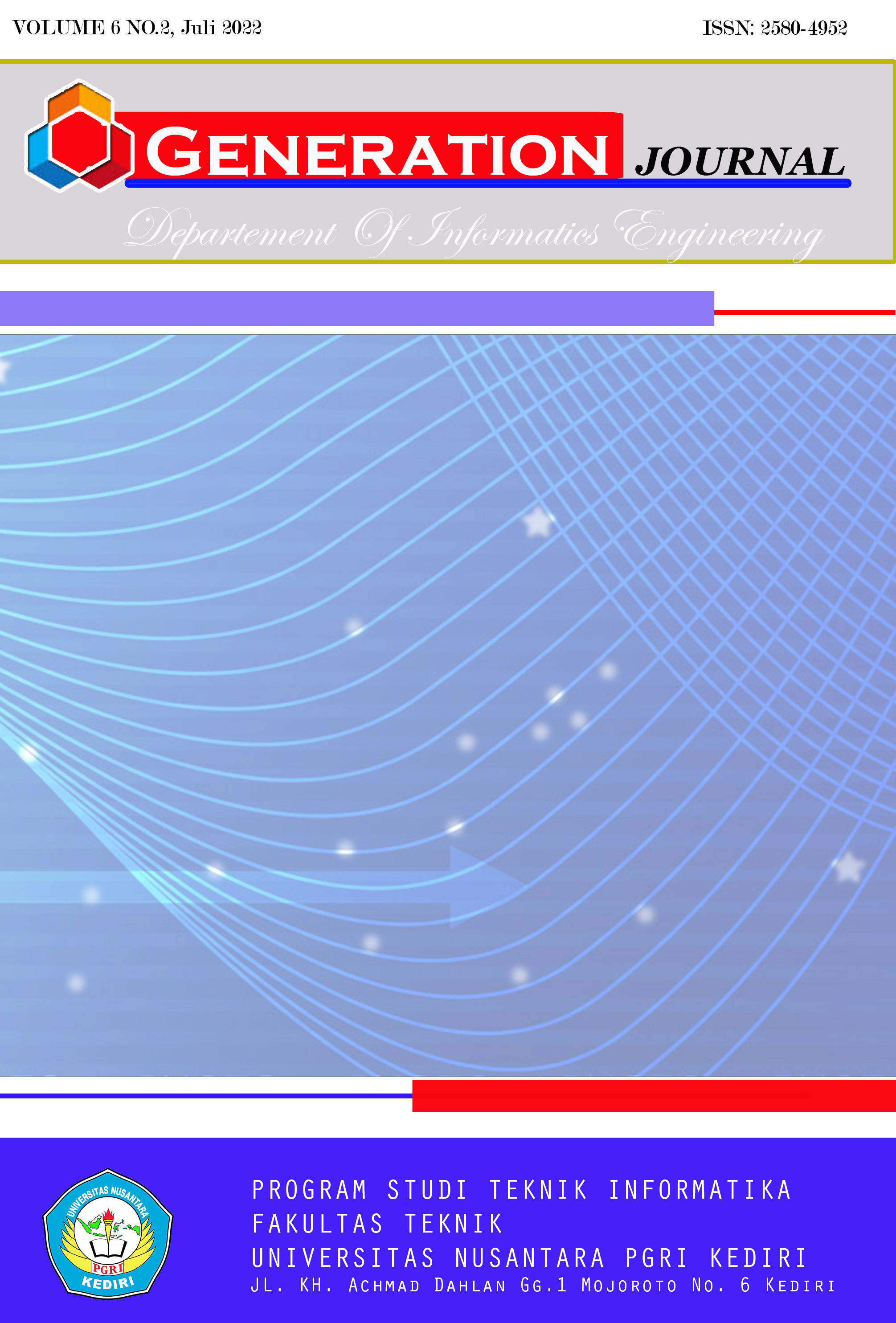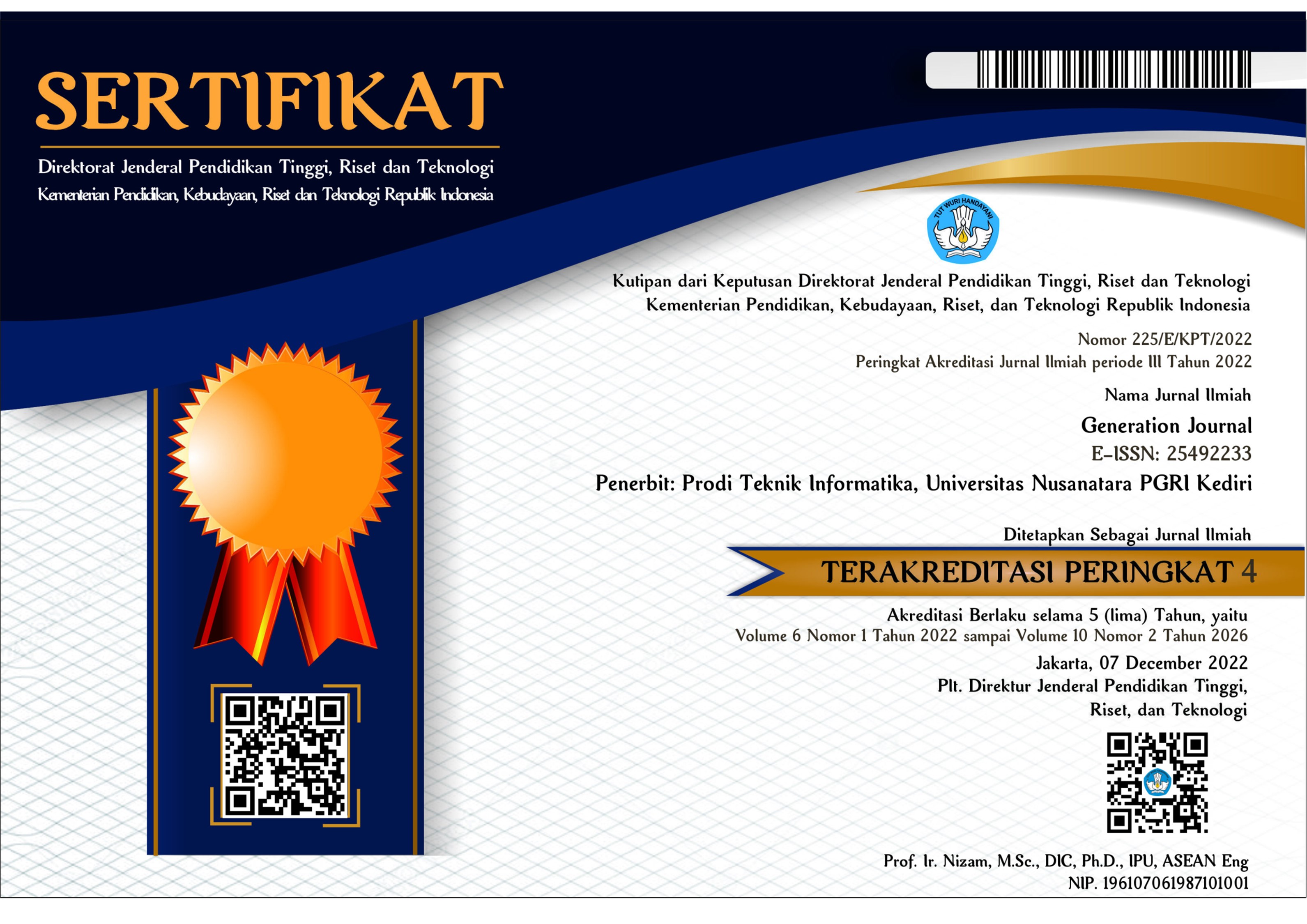Smart System Pendeteksi Keberadaan Narapidana di Lapas Kabupaten Kotawaringin Timur
DOI:
https://doi.org/10.29407/gj.v6i2.17715Keywords:
Smart System, BLE, iBeacon, Smart System, BLE, iBeaconAbstract
– The problems regarding prisons are almost endless. The government should pay attention to this. The problems that arise today, almost all correctional institutions in Indonesia exceed (over) capacity, including those in the East Kotawaringin district . Indoor Positioning System IPS is a technology that can be used to locate people or objects in a building, usually through a mobile device such as a smartphone or tablet. Although this technology is newer than GPS, services utilizing IPS are quickly gaining ground in indoor locations such as shopping malls, hospitals, airports and other indoor venues. By utilizing an iBeacon mounted on a prisoner's wristband, the iBeacon will always transmit a signal that can be picked up by the receiver. Devices that can become receivers are bluetooth repeaters (signal boosters) and prison officers' android phones. To be able to know the estimated position of the receiver on the iBeacon, a map is needed locally, which is to determine a certain location, then map it in the form of coordinates. By placing several iBeacons at certain coordinates, it can be used to determine the estimated position of the receiver to the iBeacon.
References
[2]. https://www.merdeka.com/peristiwa/4-napi-di-lapas-sampit-kabur-warga-resah.html,diakses tanggal 17 juli 2019
[3]. https://senion.com/indoor-positioning-system/#what, diakses tanggal 01 Agustus 2019
[4]. C. Gomez, J. Ollerand J. Paradells,“Overview and evaluation of bluetooth low energy,anemerging low-power wireless technology”,Sensors,vol. 12, no. 9,(2012),pp.11734-11753.
[5]. http://www.ibeacon.com/what-is-ibeacon-a-guide-to-beacons, diakses tanggal 10 Mei 2021
Downloads
Published
Issue
Section
License
Authors who publish with this journal agree to the following terms:
- Copyright on any article is retained by the author(s).
- The author grants the journal, the right of first publication with the work simultaneously licensed under a Creative Commons Attribution License that allows others to share the work with an acknowledgment of the work’s authorship and initial publication in this journal.
- Authors are able to enter into separate, additional contractual arrangements for the non-exclusive distribution of the journal’s published version of the work (e.g., post it to an institutional repository or publish it in a book), with an acknowledgment of its initial publication in this journal.
- Authors are permitted and encouraged to post their work online (e.g., in institutional repositories or on their website) prior to and during the submission process, as it can lead to productive exchanges, as well as earlier and greater citation of published work.
- The article and any associated published material is distributed under the Creative Commons Attribution-ShareAlike 4.0 International License














